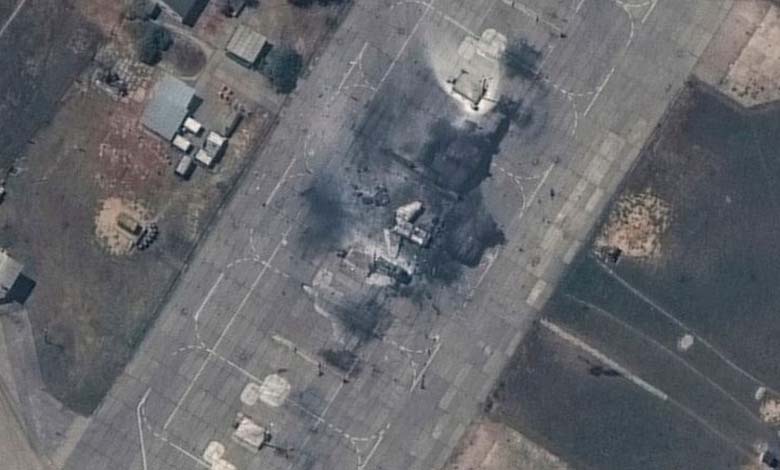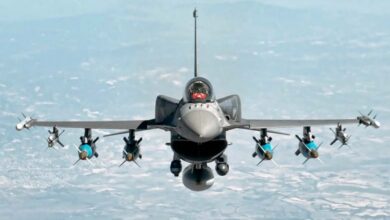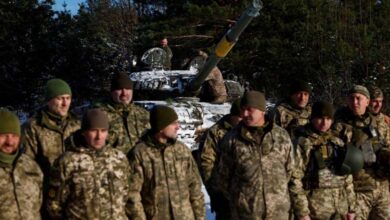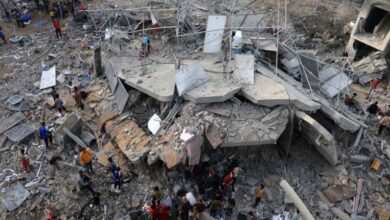Russia’s Pearl Harbor – A Symbolic Strike or a Strategic Turning Point?

In an unprecedented development in the Russia–Ukraine war, Ukraine launched a bold aerial attack using drones, described as “Russia’s Pearl Harbor.”
-
Broadcasting the Apocalypse Signal: Mysterious Messages Hint at a Russian Superweapon
-
Russian Invisibility Cloaks: Optical Illusion or Deadly Trap?
Following the haze of this surprise Ukrainian assault targeting major air bases deep within Russian territory, it became clear that—despite its success—the overall impact on Russia’s combat capabilities would be limited, according to The National Interest magazine.
Kyiv initially claimed the destruction of about 40 Russian bombers, but a U.S. official clarified the actual number was no more than a dozen. This large discrepancy highlights the extent of media distortion surrounding the operation, which aimed to boost morale in Ukraine and rally further international support.
-
Russia and Ukraine Between Fire and Negotiation: Missiles in the Sky and Exchanges on the Ground
-
The Soviet Monster S-200: Ukraine Reawakens Ghosts of the Past to Haunt Russia
Russia maintains reserves of bombers that can replenish its losses, and strategic bombers are no longer the backbone of its long-range strike capacity. Strategic operations have increasingly shifted toward ballistic missiles and long-range drones.
This attack stood out for its audacity, breaching regions previously considered secure by Russian forces. Ukrainians exploited security gaps deep within Russian territory, striking air bases in regions such as Siberia—thousands of kilometers from the front lines.
-
Putin Invites Arab Leaders to Participate in the First Russian-Arab Summit in October
-
T-90M: Russia’s Steel Shield Dominates the Battlefield
Such operations reflect a significant evolution in Ukrainian military capabilities, overcoming complex geographic and security barriers, and raising alarm within Russian and international military circles.
Ukraine reportedly used FPV drones in the attack, including the Osa drone, which carries small yet effective warheads capable of destroying aircraft and military infrastructure.
These compact drones can fly for 15 minutes at speeds of up to 150 km/h and are guided via live video feed, allowing for real-time precision targeting—making them highly efficient tools for strategic strikes.
-
Putin Talks About His Successor as President of Russia
-
197 Mutual Threats: Drone Swarms over Russia and Ukraine
Other FPV drones like the Queen Hornet and Nomad may also have participated. Their low cost (around $500–700) makes them an economical option for large-scale operations.
These drones were allegedly smuggled into Russia using concealed trucks, enabling a fully covert deployment. Some employed advanced technologies such as frequency hopping and fiber optics to evade Russian jamming systems, making them harder to counter despite their small size.
These advancements highlight Ukraine’s growing edge in drone warfare and the increasing threat they pose to conventional defense systems.
-
Behind the Fronts: An Image Sparks a Symbolic War between Russia and Ukraine
-
Largest Attack in Three Years: 337 Ukrainian Drones Fall into the Russian Trap
While the damage to Russian bombers was significant, Ukraine’s inflated estimates of financial and numerical losses did not align with Russian statements. Nonetheless, the scale and boldness of the strike sent shockwaves globally, particularly in the United States, where experts raised concerns about similar drone-based attacks on U.S. air or naval bases using low-cost UAVs hidden in shipping containers—posing a new threat to national security.
This growing threat has prompted a reassessment of air defense strategies, investment in anti-drone systems, and stronger intelligence-sharing among allied nations.
The attack redefined modern warfare by exposing vulnerabilities in what were once deemed impregnable air bases, underscoring the need for major investment in counter-drone technology.
-
U.S. Support Halted: Dangerous Scenarios for Ukraine in Its Fight against Russia
-
A New Russian Tactic to Capture Ukrainian Drones
Military experts warn that cheap and widely available drones can easily be weaponized, becoming an increasing threat to armies that rely on traditional, manned weapons systems.
The use of these drones marks a shift in warfare, where precision tech and unconventional tactics play an ever-larger role—demanding new strategies and rapid adaptation.
Ukraine currently produces around 200,000 FPV drones monthly and plans to ramp up production to 4.5 million by year’s end. Companies like TAV Drones and groups such as Wild Hornets are leading this effort, enabling coordinated, large-scale attacks like the one involving 117 drones in this operation.
-
On the Anniversary of the War in Ukraine… Russia Fails to Understand Trump’s Plan and Sets Its Negotiation Objective
-
Ukraine and Russia in the “State of the Union”: A Sign of Peace and Readiness for Dialogue
This momentum marks a significant transformation in the military dynamics between Ukraine and Russia and underlines the decisive role of drones in modern warfare. Continued development of these capabilities strengthens Ukraine’s pressure on Russia and makes it increasingly difficult for Moscow to ignore this rising threat that could shift the balance of power in the ongoing conflict.
-
Russia Recaptures 64% of Kursk Territory: Is Ukrainian Control Coming to an End?
-
A Message and a New Tactic… Kursk, Russia, Redefines War and Truce












